 Weasel Skink (Alan Page)
Weasel Skink (Alan Page)
By "fauna" we mean animals - specifically mammals, birds, lizards and frogs.
The aim of this webpage is to help you identify any new bird or lizard or frog that you see in your garden or in the bush.
Like the lizard I found in my compost bin (a Weasel Skink), or the snake at Tara's back door (a Diamond Python).
It’s always best to be cautious of any animal as they may see you as a predator and get a bit toey. Or worse still, they may see you as their lunch.
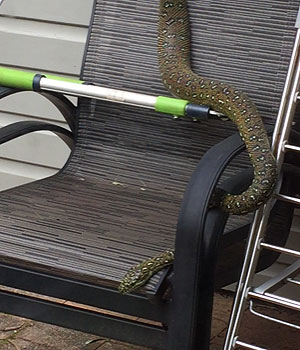 Diamond Python (Tara Cameron)
Diamond Python (Tara Cameron)
And introduced species (often referred to feral animals) are also referenced.
There's several sources you can access to try to identify the "critter" yourself, plus some Facebook groups you can contact.
- Blue Mountains Fauna Inventory
- Native Fauna Of The GBMWHA by Judy Smith and Peter Smith
- Blue Mountains Fauna Facebook Groups
- Other sources
Always interested in receiving suggestions for other sources - email the Webmaster
Blue Mountains Fauna Inventory
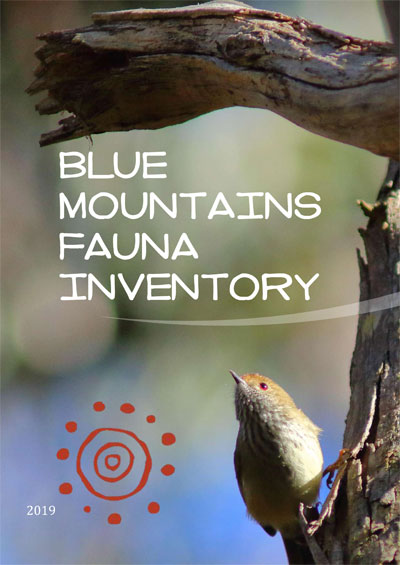 Blue Mountains Fauna Inventory cover
Blue Mountains Fauna Inventory cover
It provides images and descriptions of animals found in the Blue Mountains City Council area. Maps of where the animals have been observed is also included and the number of observations.
Although it's a 36MB download, once downloaded its 429 pages is an invaluable reference source.
Here it is - Blue Mountains Fauna Inventory
Some Background
The purpose of the Blue Mountains Fauna Project was to collate publicly available records from a variety of databases and information from the Blue Mountains community.
Data was collected through an interactive map on Council’s website. Community members were invited to drop “pins” on the map with details of fauna sighted. Records were also provided by community members via email. Research was undertaken for historical records including the writings of early European explorers.
Other data sources included Birdlife Australia Atlas, Bionet and eBird.
There were over 307,000 records collated during the project.
A total of 455 native species were recorded from all sources. Of these, 363 had three or more records with reasonable currency (post 1997).
The list of species has been extracted from this document and a list of Blue Mountains fauna in class/family/species order has been created. The NSW and Commonwealth threatened species status has been added. Here it is - Blue Mountains Fauna Species Inventory list
Native Fauna Of The GBMWHA
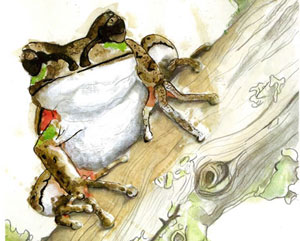 Blue Mountains Tree Frog (Kate Smith)
Blue Mountains Tree Frog (Kate Smith)
It includes the GBMWHA reserve where they have been observed and how recent that sighting is.
Also indicated is whether it is a threatened species, and whether the species is now thought to be extinct.
This is supported by their book - Native Fauna Of The GBMWHA.
This 172 page book has 200 of Peter's photos and drawings from daughter Kate.
It's available via email smitheco@ozemail.com.au or at Blue Mountains bookshops.
Blue Mountains Fauna Facebook Groups
 a jumping spider (Alan Page)
a jumping spider (Alan Page)
The first is the Blue Mountains Fauna Group. It's the permanent continuation of the original Facebook page set up for the one year Blue Mountains Fauna Inventory Project featured above. Its purpose is to continue the monitoring, identification and discussion around fauna in the Blue Mountains.
The second concerns Blue Mountains Butterflies, Bugs and Insects.
Australia has about 100,000 identified invertebrate species - but the estimated total is over 300,000.
Both Facebooks are worth a regular visit to simply enjoy and marvel at our fauna and the encounters others are having.
Other Sources
 feral kitten (Alan Page)
feral kitten (Alan Page)
Here's a few sources -
- Blue Mountains Bird Observers
- Birdlife Australia
- Australian Museum
- Australian Reptile Park
- Introduced Animal Species of Australia
We acknowledge the traditional custodians of this land
the Darug and Gundungurra people
and pay respect to their Elders past and present.
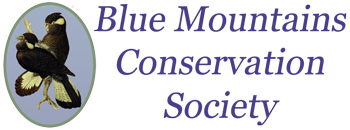
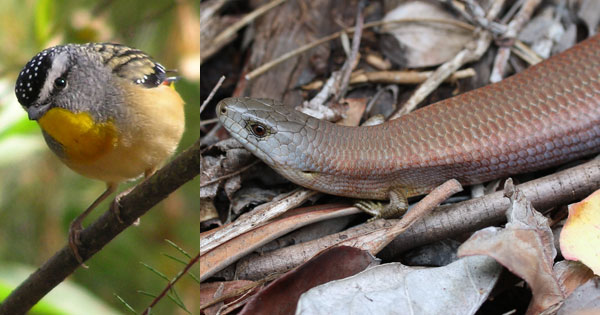 Spotted Pardalote and Mainland She‑oak Skink (Alan Page)
Spotted Pardalote and Mainland She‑oak Skink (Alan Page)